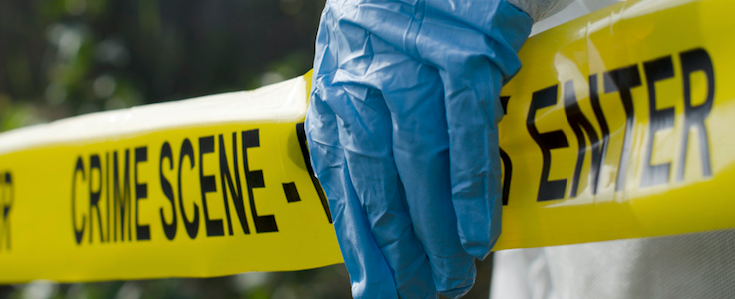How to Prove Plagiarism
 Plagiarism is a very serious allegation and whether you are a student in school, a professional in the field or a creative trying to promote your work, a single allegation of plagiarism can severely damage or ruin your career.
Plagiarism is a very serious allegation and whether you are a student in school, a professional in the field or a creative trying to promote your work, a single allegation of plagiarism can severely damage or ruin your career.
This puts a strong light on the question of how do we prove it? After all, plagiarism is not a “bright line” offense, but rather, is an infinite shade of grays ranging from “completely original” to “completely plagiarized”
Showing and proving when a particular act of unattributed copying is a plagiarism is not a simple matter.
However, this is an area that copyright might actually be able to provide some guidance. Copyright has long had to deal with the murky waters of what is a copy and what is an original work and the law has actually developed tests that it uses to determine which is which.
So while copyright may not be able to remove the ambiguity and uncertainty that arise from dealing with plagiarism, it may be able to help provide a framework for discussing that ambiguity and help focus the conversation.
Building a Plagiarism Case
Fundamentally speaking, plagiarism is the act of copying and/or using the work of another without proper attribution. This means that, for a plagiarism case to stick, an accuser has to prove two separate things:
- Copying: There has to be proof that something was copied. It could be text, images sounds or even ideas as plagiarism doesn’t have the same idea/expression dichotomy copyright does.
- Lack of Attribution: If the use is attributed, it may still be a copyright infringement, but it’s not a plagiarism. However, what is considered adequate attribution depends heavily on the medium, field and the nature of the work itself.
Both of those variables seem fairly simple but can quickly become very complicated. For example, if a user copies an idea, how does one prove they didn’t independently create it? Likewise, the definition of “adequate attribution” varies wildly as lawyers are held to different standards than novelists, who are different from researchers.
So, we have to take the two elements separately and see if we can break down how to prove both of the items.
Copying
Copying is the area where copyright law can bring us the most help as the law has clear guidelines for what must be demonstrated to prove copying.
- Access: One must prove that the accused had access to the original work. Without access, copying is impossible.
- Probative Similarities: Similarities between the two works that provide evidence of copying.
Access is often times fairly straightforward. When a student copies content from Wikipedia, there is no question of access. It can generally be assumed that everyone has access to all of the content on the public web as long as they are able to connect to it. With access, one just has to show that it was possible, not that it actually happened. The reason is because proof of actual access may be impossible or difficult to obtain, especially for cases of older plagiarism.
While access seems like it would almost never come up, it has, on many occasions, caused plagiarism allegations to be dismissed. This includes the bizarre case of Dennis the Menace, where two cartoonist unveiled two separate characters with the exact same name, on the exact same day half a world apart. Since neither artist could have known of the other’s works, the similarities have been definitively dismissed as coincidence.
Probative similarities are more difficult. In cases of directly copied works, it’s fairly straightforward. For example, when looking at verbatim plagiarism, even relatively short passages are often unique due to the large number of words available in the English language. Images, videos, and sounds are similar in that it’s very unlikely to recreate the exact same content without copying.
That being said, it has happened. Recently two nearly-identical photos of an iceberg were considered to be a plagiarism until both artists were able to produce originals and minor differences between them were spotted. It turned out the two photographers were simply at the same place at the same time shooting the same iceberg.
Still, the challenge, in most cases, deals when you’re looking at ideas and cases of modified use, such as paraphrasing.
Copyright law has something of an answer for this. When trying to determine if a work is a derivative work (and thus an infringement), it tries to look for “substantial similarity” which is determined by an “ordinary observer” test, focusing on a hypothetical “normal” member of the audience.
Basically, the ordinary observer test asks whether an “ordinary observer, unless he set out to detect the disparities, would be disposed to overlook them, and regard their aesthetic appeal as the same.”
While the definition of an ordinary observer is extremely complex, plagiarism cases get to duck many of the legal complexities by just asking, “Would a member of the intended audience, if aware of both works, notice the similarities and conjure up the other work?” If the answer is yes, then it probably is a copy.
But the problem with hypothetical people is that they don’t exist and different members of the same audience will see different things. After all, easonable people can disagree on plagiarism and both support their viewpoints. That is part of why this is often so difficult.
Attribution
While copying is heavily discussed in copyright law, attribution is not. If the use of a work amounts to an infringement without attribution, it likely is one with it as well. However, there are two elements to successful attribution, so, without both of these elements, attribution is likely incomplete.
- Indication of What Content is Not Original: Attribution must include some indication of what content is not being claimed as original.
- Who the Original Creator Is: Second, the attribution must indicate who is the original author is.
Sometimes this is done with two separate notes, such as an in-text citation that indicates what content is not original and a footnote that indicates where it came from. Other times, it’s all one note, such as putting an in-text link in a blog post.
It’s important to note that quote marks and block quotes are often a key part of identifying what specifically is being repurposed and how. Including that something is not original but not that the text is quoted is being unclear about what content is not original.
If an attribution is missing either element, then it is incomplete. It may not be an intentional plagiarism, but it doesn’t live up to being a properly-cited work. Unfortunately, it’s up to the person investigating the allegations to determine intent and laziness, but those are issues that have more to do with the severity of the plagiarism and, as a result, the repercussions.
In the end, if you have these two things and they are up to the standards of the field and the type of work, it’s not a plagiarism in any respect. Everything below that becomes a shade of gray.
Bringing it Together
That this means is simple, if a suspected plagiarist:
- Had access to the original work,
- Had similarities in their work that provide evidence of copying as determined by an “ordinary observer”,
- Failed to provide adequate attribution.
Then you are very likely looking at a plagiarism.
This means for a plagiarism allegation to stand up, it has to to include all three of these elements. You have to show access, show the similarities and prove that the attribution was in adequate.
In some cases this is breathtakingly simple. When a student copies whole paragraphs from an Internet site without attribution, access, similarity and lack of attribution are all obvious on their face. It’s when the copying is more subtle or the attribution more present that things become murky.
Still, when starting a plagiarism investigation, it makes sense to start with these three elements and try to prove or disprove them individually. If any of the three do not hold up, then the allegations can not stand.
To be clear, even with all three elements this framework isn’t ironclad. As the iceberg photo case showed, some things can pass all of the tests and still be non-plagiarized (and non-infringing). But if you can’t make all three of these elements, you can not build a plagiarism case.
In short, these elements don’t necessarily seal a plagiarism allegation, but they are all required for one to survive.
Bottom Line
Obviously, this guide isn’t meant to nor can it remove all of the ambiguity from plagiarism investigations. There’s simply no way to do that as issues of copying and attribution are highly subjective.
However, this does provide a point to start the conversation about whether or not plagiarism took place and a common ground from all sides to work from. So this isn’t meant to remove the ambiguity, but rather, provide a framework for addressing it.
But even with this, plagiarism investigations aren’t going to get any easier. With more content being created, that means more content to plagiarize and more content to investigate for plagiarism. Throw in a constant stream of new content types and plagiarism will continue to be a never-ending conversation.
Want to Reuse or Republish this Content?
If you want to feature this article in your site, classroom or elsewhere, just let us know! We usually grant permission within 24 hours.
